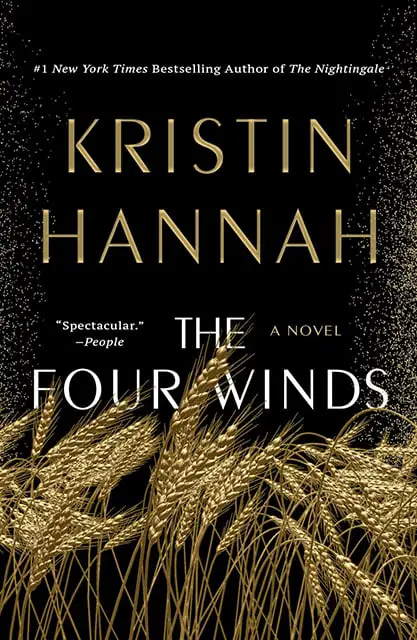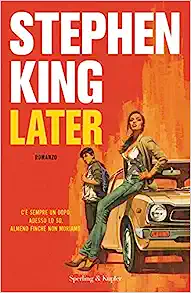Kurt Vonnegut (1922–2007) was an American writer known for his unique style, which combined science fiction, satire, and absurdity, presenting unique perspectives on life, society, and the human condition. With so many captivating titles to choose from, you may be wondering where to start.

Whether you’re new to his works or looking to revisit his genius, here’s a guide to navigating the reading order of Kurt Vonnegut’s books. Join me as we step into Vonnegut’s imaginative universe and explore the stories that have made him a literary icon.
How Many Kurt Vonnegut Books Are There?
Kurt Vonnegut wrote a total of 14 novels, 3 short story collections, 3 nonfiction books, 5 plays, 1 children’s books, and numerous anthologies and essays. His works include well-known titles such as Slaughterhouse-Five (1969), Cat’s Cradle (1963), and Breakfast of Champions (1973).
His novels and major works, along with their publication dates, are listed below:
Novels:
- “Player Piano” (1952): A dystopian novel set in a future where machines have taken over most jobs, leading to a society of division between the engineers who maintain them and the rest of the population.
- “The Sirens of Titan” (1959): A science fiction novel that follows the adventures of a wealthy man who discovers the true purpose of human existence as he travels through space and time.
- “Mother Night” (1961): A dark satire about an American spy posing as a Nazi propagandist, grappling with questions of identity, morality, and the consequences of his actions.
- “Cat’s Cradle” (1963): A satirical science fiction novel exploring the dangers of scientific advancement without ethical consideration, centered around the creation of a deadly substance called Ice-Nine.
- “God Bless You, Mr. Rosewater” (1965): A novel about a wealthy man who decides to give away his fortune to the needy, examining themes of philanthropy, mental health, and the value of human life.
- “Slaughterhouse-Five” (1969): A science fiction anti-war novel that follows the experiences of Billy Pilgrim, a soldier who becomes “unstuck in time” after surviving the bombing of Dresden during World War II.
- “Breakfast of Champions” (1973): A satirical novel about an unremarkable man’s descent into madness after reading a novel that claims humans have no free will.
- “Slapstick” (1976): A comedic novel about a dysfunctional sibling relationship and the collapse of society due to overpopulation and a mysterious disease.
- “Jailbird” (1979): A novel that explores the life of a man recently released from prison, examining themes of corporate corruption and the labor movement.
- “Deadeye Dick” (1982): A novel that tells the story of a man who accidentally kills a pregnant woman as a child and spends his life trying to find meaning and redemption.
- “Galápagos” (1985): A satirical science fiction novel that envisions the future of humanity after a global catastrophe, focusing on evolution and survival.
- “Bluebeard” (1987): A novel about an abstract painter who recounts his life story, exploring themes of art, relationships, and personal integrity.
- “Hocus Pocus” (1990): A novel that critiques the American military-industrial complex through the story of a college professor who is accused of a mass shooting.
- “Timequake” (1997): A semi-autobiographical novel about a cosmic event that forces humanity to relive the last decade, causing the protagonist to reflect on free will and human agency.
Vonnegut also wrote a final novel called If God Were Alive Today, but it remained unfinished at his death in 2007.
Short Story Collections:
- “Welcome to the Monkey House” (1968): A collection of satirical and speculative fiction stories that explore various aspects of the human condition.
- “Bagombo Snuff Box” (1999): A collection of previously uncollected short stories that showcase Vonnegut’s wit and storytelling prowess.
- “While Mortals Sleep” (2011): A posthumous collection of previously unpublished short stories covering a range of topics and styles.
Nonfiction:
- “Palm Sunday” (1981): A collection of essays and speeches reflecting on Vonnegut’s life, career, and opinions on various topics.
- “Fates Worse Than Death” (1991): A memoir and commentary on modern culture, politics, and Vonnegut’s experiences.
- “A Man Without a Country” (2005): A collection of essays on various topics including politics, society, and the environment, providing insight into Vonnegut’s worldview.
Plays:
- “Happy Birthday, Wanda June” (1970): A play that satirizes the concept of heroism through the story of a man who returns home after being missing for years.
- “Between Time and Timbuktu” (1972): A television play based on Vonnegut’s works, blending elements from several of his novels and stories.
- “Make Up Your Mind” (1993): A play about a man trying to make decisions in a society that is increasingly complex and confusing.
- “Miss Temptation” (1956): A one-act play that explores themes of desire, morality, and human behavior.
- “Long Walk to Forever” (1960): A short story later adapted into a play that focuses on love and choices.
Children’s Books:
- “Sun Moon Star” (1980): A children’s book that tells the story of the birth of Jesus Christ from the perspective of the star of Bethlehem.
What Order Should I Read Kurt Vonnegut’s Books In?
When exploring Kurt Vonnegut work, reading his books in a specific order can enhance your experience to understand his themes and writing style better. His novels often share common themes and recurring characters that create a sense of continuity throughout his body of work. For example, the character Kilgore Trout appears in multiple books, and reading the novels in a specific order can help you understand his development and significance across different narratives.
Here’s how you can approach reading Kurt Vonnegut’s works according to three different orders: chronological order, thematic order, and popularity and critical acclaim. Each one provides a unique way to experience his writings and understand his contributions to literature. Choose the order that aligns best with your interests!
1. Chronological Order
Reading Kurt Vonnegut’s books in the order they were published allows you to see how his writing evolved over time. Here is a list of his major works in chronological order:
- “Player Piano” (1952)
- “The Sirens of Titan” (1959)
- “Mother Night” (1961)
- “Cat’s Cradle” (1963)
- “God Bless You, Mr. Rosewater” (1965)
- “Slaughterhouse-Five” (1969)
- “Breakfast of Champions” (1973)
- “Slapstick” (1976)
- “Jailbird” (1979)
- “Deadeye Dick” (1982)
- “Galápagos” (1985)
- “Bluebeard” (1987)
- “Hocus Pocus” (1990)
- “Timequake” (1997)
2. Thematic Order
Reading Vonnegut’s books based on common themes can give you a deeper understanding of his perspectives on various topics such as science, identity, and society. Here is an order based on themes:
- Science Fiction and Philosophy:
“The Sirens of Titan” (1959)
“Cat’s Cradle” (1963)
“Slaughterhouse-Five” (1969)
“Galápagos” (1985)
- Identity and Morality:
“Mother Night” (1961)
“Slapstick” (1976)
“Breakfast of Champions” (1973)
- Society and Critique:
“God Bless You, Mr. Rosewater” (1965)
“Jailbird” (1979)
“Deadeye Dick” (1982)
“Hocus Pocus” (1990)
- Autobiographical and Reflective:
“Timequake” (1997)
3. Popularity and Critical Acclaim
Starting with Vonnegut’s most famous and well-regarded works can offer a good introduction to his style and key themes. Here’s an order based on popularity and acclaim:
- “Slaughterhouse-Five” (1969)
- “Cat’s Cradle” (1963)
- “Mother Night” (1961)
- “Breakfast of Champions” (1973)
- “The Sirens of Titan” (1959)
- “God Bless You, Mr. Rosewater” (1965)
- “Galápagos” (1985)
- “Jailbird” (1979)
- “Deadeye Dick” (1982)
- “Timequake” (1997)
- “Player Piano” (1952)
- “Slapstick” (1976)
- “Hocus Pocus” (1990)
- “Bluebeard” (1987)
If you’re looking to have the best experience reading Kurt Vonnegut’s works, I recommend following the popularity and critical acclaim order. This approach allows you to start with his most famous and well-regarded works, giving you a strong introduction to his writing style, themes, and unique approach to storytelling.
What Is The Best Kurt Vonnegut Book to Start With?
If you’re looking to explore the works of Kurt Vonnegut and might be wondering where to start, starting with one of his best-known novels is a great introduction to his unique writing style, themes, and perspective on life.
One of the best books to start with is “Slaughterhouse-Five.” This novel is one of Vonnegut’s most famous works. It tells the story of a soldier named Billy Pilgrim who experiences time travel and sees different moments of his life out of order. The book deals with themes like war, free will, and the human condition. It’s a good starting point because it showcases Vonnegut’s unique storytelling style and is considered one of his masterpieces.
Another great option is “Cat’s Cradle.” This book is about a journalist who is trying to write a book about the day the atomic bomb was dropped on Hiroshima. The story explores the dangers of science, religion, and human folly. It’s an interesting and thought-provoking read that might appeal to those who enjoy questioning the world around them.
If you’re interested in a critique of American culture and society, you might enjoy “Breakfast of Champions.” This novel follows a writer named Kilgore Trout and a car dealer named Dwayne Hoover. The story dives into the absurdity of the world and the role of free will. It’s a fun and engaging read with Vonnegut’s signature humor.
Overall, starting with any of these three books—”Slaughterhouse-Five,” “Cat’s Cradle,” or “Breakfast of Champions”—is a great way to begin your journey with Kurt Vonnegut’s work. Choose the one that interests you the most based on the themes or topics you enjoy. Once you finish one book, you’ll likely want to explore more of Vonnegut’s other works!
The bottom Line
There are many Vonnegut books to choose from, and the best order to read them can depend on your interests and reading goals. Each of his books brings something different to the table, whether it’s his sharp wit, thought-provoking ideas, or captivating characters.
Regardless of where you start, you’re sure to find yourself drawn into Vonnegut’s world and his distinctive take on the human experience. Enjoy the journey through his literary universe!


